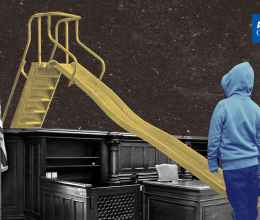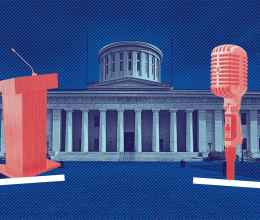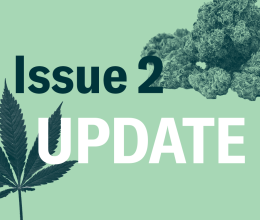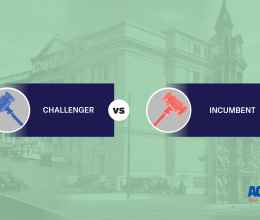Since March of 2020, the rapid spread of Covid-19 in Ohio’s prisons has given us a terrifying, tragic, visceral example of how mass incarceration is a public health issue. Stories like this one, shared last June by a brave individual inside Marion Correctional Institution, highlight not only how dangerous the pandemic was within the prison, but it also shined a spotlight on the inadequate, inhumane health care that incarcerated people received in response. The author shared how masks were not mandated until over two weeks after the first stay-at-home order was put in place. One especially upsetting detail from the account was that “[a man] waited as long as possible before seeking medical attention for fear of being mistreated or neglected by the medical staff.” That man later died.
The complete disregard for human life that was felt in Ohio’s prisons reverberated out to many areas of the country’s pandemic response, and this was additionally emphasized in Collin Marozzi’s commentary on the mishandling of Covid-19 in Ohio’s prisons.
It will likely be years before we can interpret the effect prisons and jails had on the national infection rate and death toll, but last April the ACLU and researchers from the University of Pennsylvania, the University of Tennessee, and Washington State University estimated that community spread from jail infections could add between 99,000 and 188,000 deaths – double to almost triple what the expected total death toll was at the time (100,000). Today we’ve collectively lost over 554,000 loved ones.
While the community spread from jail infections is obviously a public health crisis, mass incarceration should be seen as a public health issue for many additional reasons. The way our elected officials, our institutions, and our citizens treat the mental and physical health of previously and currently incarcerated individuals is a direct reflection on our society’s attitude towards overall public health.
We are failing, badly, when it comes to health, economic, and racial equity inside and outside of the prison system. Public health isn’t just about hospitals or medical care; it’s beyond that. In order to be healthy, people need to have affordable access to safe housing, nutritious food, clean water, quality education, patient-centered health care – especially preventative care – and the ability to have economic mobility and a living wage. One of the biggest flaws with American health care is that we have a responsive health care system, instead of a preventative health system.
We see that responsive mentality in public safety through mass incarceration and the lack of support we give to people released from prison. As the ACLU has reported, “Jails are a primary driver of mass incarceration. Two out of three people in Ohio jails are there pretrial, meaning they are legally innocent. They have simply been suspected of a crime, not proven guilty.” Incarcerating people should be seen as a last resort, instead of the default response. People who are released from prison should be given all the support they need to thrive after serving their sentences. It’s up to all of us as citizens to prioritize improving public health by supporting people’s health while they are incarcerated and after they are released.
Ending mass incarceration entirely should be the ultimate end goal.
Mass incarceration is hurting the health of our citizens by putting them in a cycle of health inequity. David Cloud, Senior Program Associate for the Vera Institute of Justices’ Substance Use and Mental Health Program supports this in his examination of the intersection of public health and criminal justice. Cloud explicitly claims that “the crime bill set into motion a wave of punitive laws in prison growth that has in fact manifested into a public health crisis” and that “to understand the health implications of mass incarceration… it’s important to unpack the cycle of what happens.” This cycle starts affecting people through pretrial incarceration and moves forward through the system of cash bail, inhumane and inadequate health care while incarcerated, and the lack of health support given to people upon release. Cloud also mentions that we, as a community, need to “scale back the extent to which we rely on jails, courts, and prisons to serve as our default behavioral health providers.”
Many studies, such as this one from the American Academy of Family Physicians, show that there are higher rates of mental illness, substance abuse, infectious disease, and chronic illnesses among people who are incarcerated. After this past year, even people with no experience in the criminal legal system can now probably relate to how confinement and isolation can have a negative toll on our mental and emotional well-being. It’s not difficult to imagine how anyone could deteriorate in the environment of prison or jail, especially individuals who already are struggling with mental health issues, addiction, or chronic illnesses. Instead of making it a priority for people to regain their mental, physical, and emotional health when that deterioration happens, the system piles on more punishment, and this can be especially true for people already dealing with mental illness. The punishment leads to further separation, isolation, and confinement, perpetuating a cycle of deterioration. Important to note is that most incarcerated people will be released from jail and prison. Actively damaging the health and well-being of people while they are serving time is not only inhumane; it also hurts their chances of acclimating to life when they are released.
Collateral sanctions, which vary depending on the level and type of offense, can make previously incarcerated individuals’ reentry into society even harder. In Ohio there are over 1,000 types of collateral sanctions, also known as “collateral consequences,” which are doled out to those convicted of various crimes. These can include losing access to disability and food assistance benefits, losing health, dental, and vision insurance, being unable to be accepted to secondary educational institutions, losing job opportunities or licenses, and being denied housing. When a person has a harder time getting employment, education, and housing and doesn’t have access to healthcare, food assistance, or disability benefits, how are they supposed to thrive? How are they supposed to keep themselves mentally and physically healthy? What options are we as a society giving them?
After seeing mass incarceration as the public health issue it is, you may realize that it is ridiculous that our country, states, and cities put exorbitant amounts of money in their budgets towards public safety while not putting the same fiscal energy towards public health. To put it into perspective on a local level, in Cleveland, Ohio’s recently approved 2021 fiscal budget, 56% of the funds ($371,484,995) went to Public Safety. The Division of Police alone was allotted 59% of those public safety funds ($218,153,161) for the 2021 fiscal year – a 3% increase in funds from 2020. In comparison, only 1% ($11,114,252) is budgeted to the Department of Public Health, with a mere $227,360 of that being budgeted toward a newly created Division of Health Equity and Social Justice.
36% of Cleveland’s population lives in poverty. The public housing waiting list surpasses 21,000 people. Clevelanders are suffering from addiction, chronic health issues, and mental illness, and they also lack access to affordable resources. It is a disgrace that more city funds are not going towards public health and eliminating homelessness and poverty in our community.
Together, we can advocate for change. And this must start with bail reform. The recent Bail Report released by the ACLU of Ohio estimated their “policy recommendations would save Ohio $199 [million] to $264 million each year.” These policy recommendations include ensuring people who pose no threat be released without needing to post a financial bond. The money, resources, and energy from these cuts should be refocused towards health, economic, and racial equity. When we invest in these things, we’ll create a stronger, healthier community; we’ll also create a safer community. One without the mass incarceration of our citizens.
Want to join us in the fight?
Join the ACLU of Ohio’s Action Team to help those in dire need of our assistance. The Northeast team is currently reaching out to Cuyahoga County Common Pleas and municipal judges about reforming cash bail and could use your help.
Jaclyn Renee Vogel
Member of ACLU of Ohio Action Team






